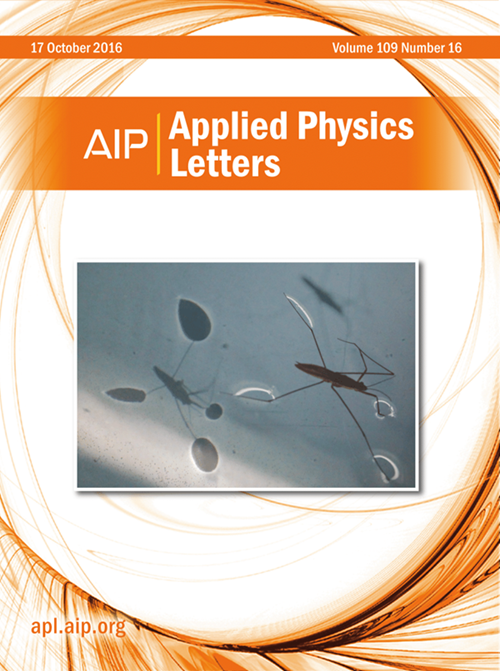Highly efficient photoelectron emission from stable low-work-function surfaces using organic bases
IF 3.6
2区 物理与天体物理
Q2 PHYSICS, APPLIED
引用次数: 0
Abstract
Photocathodes coated with alkali metals such as cesium (Cs) exhibit high quantum efficiency (QE) owing to their low work functions (WFs). However, their poor stability and short lifetimes under vacuum conditions limit their practical application. In this study, we demonstrate that modifying electrodes with phenanthroline derivatives allows to achieve ultra-low WFs of 2.2 eV while significantly enhancing their stability compared to Cs under both high vacuum (∼10−5 Pa) and ultra-high vacuum (∼10−8 Pa) conditions. Notably, 4,7-bis(1-pyrrolidinyl)-1,10-phenanthroline exhibited greater stability than Cs and achieved more than twice the QE of Cs in the 2.7–3.5 eV photon energy range, without relying on negative electron affinity structures. These findings demonstrate the potential of organic low-WF materials as alternatives to alkali metals for photocathode applications, offering extended photoemission lifetimes under less stringent vacuum conditions.高效光电子发射稳定的低工作功能表面使用有机碱
以碱金属铯(Cs)为涂层的光电阴极由于其低功函数(WFs)而具有高量子效率(QE)。然而,它们在真空条件下稳定性差,寿命短,限制了它们的实际应用。在这项研究中,我们证明了用菲罗啉衍生物修饰电极可以实现2.2 eV的超低WFs,同时在高真空(~ 10−5 Pa)和超高真空(~ 10−8 Pa)条件下,与Cs相比,显著提高了它们的稳定性。值得注意的是,4,7-双(1-吡咯烷基)-1,10-菲罗啉表现出比Cs更大的稳定性,在2.7-3.5 eV光子能量范围内的QE是Cs的两倍以上,而不依赖于负电子亲和结构。这些发现证明了有机低wf材料作为碱金属光电阴极应用的替代品的潜力,在不太严格的真空条件下提供延长的光电发射寿命。
本文章由计算机程序翻译,如有差异,请以英文原文为准。
求助全文
约1分钟内获得全文
求助全文
来源期刊

Applied Physics Letters
物理-物理:应用
CiteScore
6.40
自引率
10.00%
发文量
1821
审稿时长
1.6 months
期刊介绍:
Applied Physics Letters (APL) features concise, up-to-date reports on significant new findings in applied physics. Emphasizing rapid dissemination of key data and new physical insights, APL offers prompt publication of new experimental and theoretical papers reporting applications of physics phenomena to all branches of science, engineering, and modern technology.
In addition to regular articles, the journal also publishes invited Fast Track, Perspectives, and in-depth Editorials which report on cutting-edge areas in applied physics.
APL Perspectives are forward-looking invited letters which highlight recent developments or discoveries. Emphasis is placed on very recent developments, potentially disruptive technologies, open questions and possible solutions. They also include a mini-roadmap detailing where the community should direct efforts in order for the phenomena to be viable for application and the challenges associated with meeting that performance threshold. Perspectives are characterized by personal viewpoints and opinions of recognized experts in the field.
Fast Track articles are invited original research articles that report results that are particularly novel and important or provide a significant advancement in an emerging field. Because of the urgency and scientific importance of the work, the peer review process is accelerated. If, during the review process, it becomes apparent that the paper does not meet the Fast Track criterion, it is returned to a normal track.
 求助内容:
求助内容: 应助结果提醒方式:
应助结果提醒方式:


